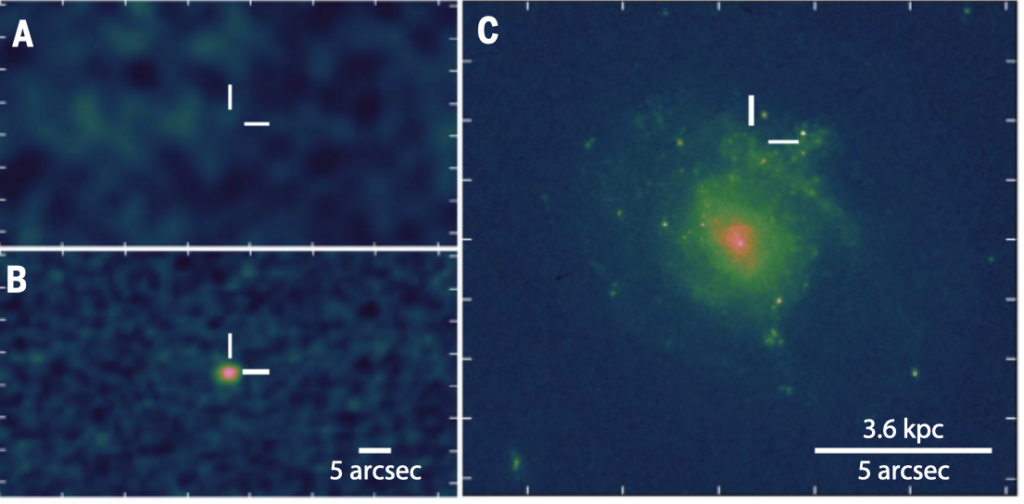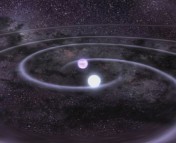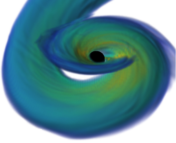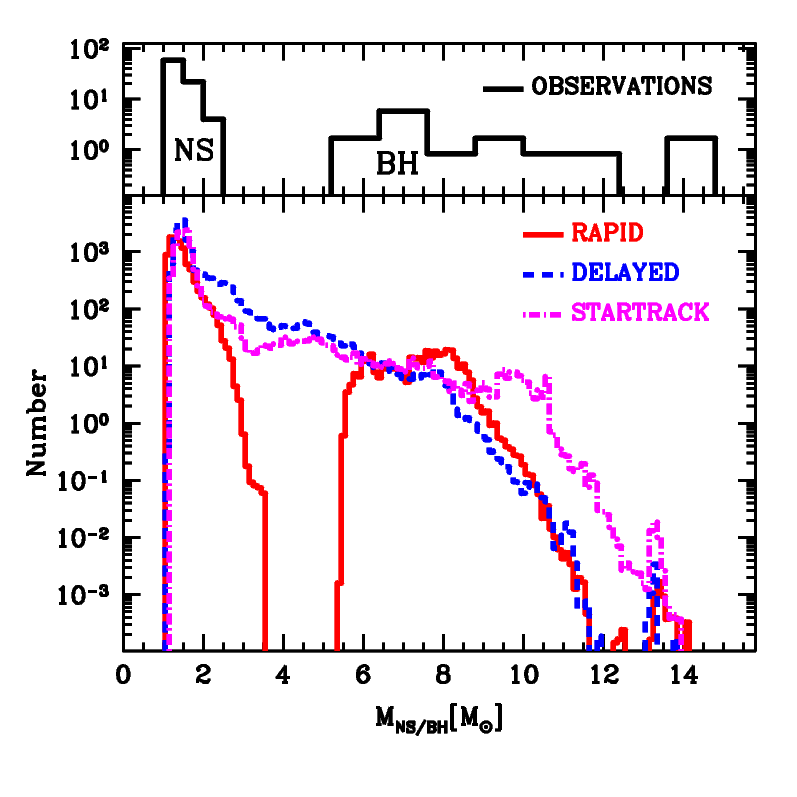Title: A transient radio source consistent with a merger-triggered core collapse supernova
Authors: D. Z. Dong, G. Hallinan, E. Nakar et al.
First Author’s Institution: Caltech
Status: Published in Science [closed access]
Merging astronomical objects are a lot of fun! When two stars merge, they leave behind a more massive star. When compact objects (black holes or neutron stars) merge, they emit gravitational waves. What happens when a compact object merges with a star? Turns out the tiny little compact object can completely destroy the star, causing it to explode as a supernova! The authors of today’s paper investigate an explosion that most likely resulted from such an unusual merger.
Clue #1 – A mysteriously luminous radio transient!
The authors worked with data taken as part of the Very Large Array Sky Survey (VLASS). VLASS uses the Karl G. Jansky Very Large Array radio telescope in New Mexico to survey the entire sky at radio frequencies (1-5 GHz) to search for new radio sources or “radio transients”. In their search, the authors identified an exceptionally bright radio source in the data from 2017 that was absent in archival VLA data from 1997. This source, named VT1210+4956, is associated with a spiral dwarf galaxy SDSS J121001.38+495641.7, and is ten times more luminous than any other source in their search! Figure 1 shows the radio and optical images indicating the position of this transient source.Bright radio transients of this sort typically occur when fast-moving material ejected from a supernova collides with slow-moving preexisting circumstellar material (CSM) surrounding the star. The faster supernova ejecta drives a shock through the CSM, which leads to radiation at radio frequencies through a process called synchrotron emission. The exceptionally high radio luminosity of VT1210 suggests that the supernova ejecta were moving at exceptionally high (relativistic) speeds. One way to achieve this is if a compact object is involved in the supernova explosion, which acts as a “central engine” i.e. a central source of energy that can accelerate the ejecta to very high velocities. In this scenario, we expect a relativistic jet that should emit a burst of x-rays.

Clue #2 – A mysterious X-ray transient!
The authors scanned through archival data from several x-ray telescopes to search for any transients coincident with VT1210 – and voila! They found GRB140814A – a 15 second long burst of x-rays discovered by the Monitor of All-sky X-ray Imaging (MAXI) instrument aboard the International Space Station. The on-sky location of this burst was consistent with the position of V1210, however the burst occurred in 2014 – three years before V1210!
This suggests the following chronology of events – In 2014, a massive star in the galaxy SDSS J1210 exploded as a supernova that was accompanied by a relativistic jet resulting in x-ray emission. Three years later, the supernova ejecta crashed into pre-existing CSM around the star, resulting in the bright radio emission.
Using the x-ray and radio observations, the authors calculate that this collision with CSM occurs at a distance of about 1017 cm (about 10000 times the distance between the sun and Earth). They also estimate that the total CSM mass around the star is at least 1 M☉. In order to accumulate this much mass around the star, the star must be losing mass at a rate of ~4×10-2 M☉/year. This is an unusually large mass loss rate – much larger than mass lost by typical stars in their everyday lives through stellar winds (for example the sun has a stellar wind that loses mass at a rate of 10-14 M☉/year !). This suggests that the mass was not lost gradually as a stellar wind, but was triggered by something external. Finally, based on the distance of the shock interaction and the shock velocity, the authors calculate that this mass loss triggering episode occurred a few centuries before the supernova explosion.
Piecing it together – Where did all this CSM come from?
The authors explore several possible mechanisms that could result in sudden mass loss in a star a few hundred years before it explodes as a supernova. Mass loss episodes could be triggered by nuclear burning instabilities in the star, however these are predicted to occur only a few years before the star explodes. A binary companion could strip away tidal material from the star, however the authors calculate that this is most likely to happen 104 – 107 years before the star explodes.
A model that ties together all observations is a “merger driven supernova”. In this model, the binary companion is a compact object that eventually merges with the star. As the compact object plunges into the star’s envelope, it ejects mass from the envelope at a rate consistent with that calculated by the authors. As the compact companion inspirals further through the envelope (on a timescale of a few hundred years), it tidally disrupts the core of the star, causing it to explode. Once the star explodes, an accretion disk is formed around the compact companion that has now reached the core of the star. This accretion disk launches a relativistic jet, producing x-rays similar to those that were detected with MAXI. The mass ejected during the supernova explosion eventually collides with the ejected envelope of the star, producing the bright radio transient detected by VLA.
VT1210 thus marks the first discovery of a “merger-driven supernova”. Additional observations of such supernovae will help better understand the final fates of binary stars.
Astrobite edited by Katya Gozman
Featured image credit : Chuck Carter




